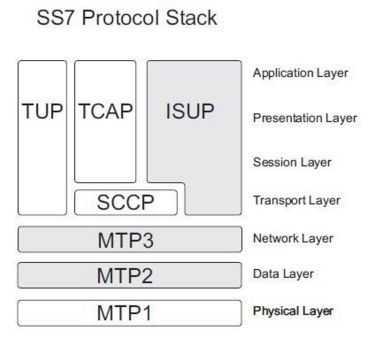SS7
(more content) |
(added image) |
||
| Line 4: | Line 4: | ||
A conceptual illustration of the SS7 protocol stack is shown below: | A conceptual illustration of the SS7 protocol stack is shown below: | ||
| + | |||
| + | |||
| + | [[Image:Ss7-protocol-stack.jpg|375px]] | ||
Revision as of 14:47, 13 July 2009
SS7 is a signaling protocol which is used to set up and tear down phone calls. It also provides support for such functionality as local number portability, Short Messaging Service (SMS), prepaid billing and number translation.
The configuration of SS7 requires that the physical layer, through to the transport layer, and up to the application layer be configured. SS7 configuration involves configuring values for MTP2, MTP3, and ISUP.
A conceptual illustration of the SS7 protocol stack is shown below:
SS7 and TelcoBridges
TelcoBridges provides SS7 support with all of its media gateway, VAS development platform and monitoring devices. SS7 functionality is licensed separately and can be provided at initial purchase or added later on via a software license upgrade.
SS7 signaling is configured once for the entire Tmedia or Tdev system. Any one Tmedia unit is capable of running the entire SS7 signaling stack for all the Tmedia units in a system.
Systems developed using TelcoBridges hardware can support up to a maximum of 64 point codes. It is worth noting that a single pointcode can be used for 2 or more devices configured as a single system.
High availability (HA) has been designed into the architecture of the Tmedia product such that the failure of an SS7 stack on one Tmedia unit will be taken over by the SS7 stack of another Tmedia unit.
